HTC EVO 3D vs. Motorola Photon 4G: Choosing the Best Sprint Phone
by Anand Lal Shimpi on August 17, 2011 11:11 PM ESTSprint customers almost always get the short end of the stick. In exchange for some of the more reasonable smartphone plans in the US, Sprint customers typically enjoy a mediocre selection of phones. Over the years there have been a few that have stood out. The Palm Pre and EVO 4G both come to mind. But generally speaking, all of the cool phones go elsewhere. In fact, the last Sprint phone we reviewed was the Samsung Epic 4G and that was almost a year ago. Of course more phones have debuted on Sprint since then, they just haven't been all that interesting.
Until now of course.
Today we have Sprint's two flagship Android smartphones: the HTC EVO 3D and the Motorola Photon 4G. Despite naming differences both support Sprint's 4G WiMAX network, have dual-core SoCs and boast 4.3-inch screens, but these two are far more different than you'd expect.
The EVO 3D uses a 1.2GHz Qualcomm Snapdragon S3 (MSM8660) and can capture/display 3D content. Meanwhile the Photon 4G is NVIDIA's debut phone on Sprint, featuring a 1GHz Tegra 2 and a high resolution 8MP rear camera sensor.
Before we get too far down the internal comparison, let's talk about the hardware itself first.
| Sprint EVO 3D vs. Photon 4G | ||||
| EVO 3D | Photon 4G | |||
| Height | 127 mm | 126.9 mm | ||
| Width | 66.0 mm | 66.9 mm | ||
| Depth | 11.9 mm | 12.2 mm | ||
| Weight | 170g | 158g | ||
| SoC | 1.2GHz dual-core Qualcomm Snapdragon S3 MSM8660 | 1GHz dual-core NVIDIA Tegra 2 | ||
| GPU | Qualcomm Adreno 220 | NVIDIA ULP GeForce | ||
| System Memory | 1GB | 1GB | ||
| NAND |
4GB NAND internal 8GB SanDisk class 4 microSD preinstalled |
16GB NAND internal |
||
| Display |
4.3" 3D qHD - 960 x 540 LCD |
4.3" qHD - 960 x 540 RBGW PenTile LCD |
||
| Display Output | HDMI via MHL | microHDMI | ||
| Front Camera | 1.3MP | 0.3MP | ||
| Rear Camera | 2 x 5MP 3D w/ Dual LED Flash | 8MP w/ Dual LED Flash | ||
| Battery | Removable 6.57 Whr | Removable 6.3 Whr | ||
| Shipping Android Version | 2.3.3 | 2.3.4 | ||
| Contract Price | $199 ($549 off-contract) | $199 ($549 off-contract) | ||
The physical comparison boils down to personal preference. The Photon has a lighter and more plasticky feel while the EVO 3D feels more dense and higher quality. Both are awkwardly large thanks to their 4.3" screen size, but the matte and textured finish of the EVO 3D actually does make it easier to hold than the Photon.
Where the Photon starts winning back points is with its kickstand. I've always been a fan of integrated kickstands and the Photon's is no exception. It's convenient for anyone that keeps their phone on a desk, uses it as an alarm clock or watches a lot of movies on it. Although I can't bring myself to spend two hours staring at a smartphone screen (even a large one), I know it's something that people do and the kickstand can be quite useful for those folks. Unfortunately you can't control the angle of the kickstand, so if you're super tall and seated in coach it may not be all that convenient.
Stylistically the EVO 3D takes a more conservative but well received approach, while the Photon tries something new with its long-octagon shape. There's nothing gained by Motorola chopping off the corners of the Photon, it's just different.
The Photon's atypical styling extends to the volume rocker as well. While the power/lock button is fairly standard, the volume rocker is textured with horizontal slits. Button presses are not firm but not mushy either.
The EVO's buttons by comparison are more traditional but extremely low profile. The obvious exception being the massive camera shutter release button, which feels good but not as great as you'd expect. It's also slightly disappointing that unlike on a WP7 device, hitting the camera button doesn't automatically bring the phone out of sleep and drop you into the camera app. If the EVO is unlocked and awake however, the button does just that.
To play up the 3D gimmick make it easier to switch between 2D and 3D shooting modes there's a physical toggle switch on the EVO 3D, next to the shutter release button. You only need the toggle for capture, when playing back content the display automatically switches between 2D and 3D modes.
Pulling off the back cover is far easier on the Photon. The EVO 3D makes you pull a little too much and some of the notches don't seem like they want to let go. Unlike some more recent HTC phones, the EVO 3D doesn't include any antennas in the rear cover - everything is baked into the body of the phone.
Both phones feature a removable battery. The EVO 3D has a 6.57 Wh unit while the Photon 4G's battery weighs in at 6.3 Wh. Behind the battery is a microSD card slot (with an 8GB card) on the EVO 3D. The Photon 4G on the other hand comes with no microSD card installed (but 16GB of NAND on-board) in addition to a SIM card. The Photon 4G includes a Qualcomm MDM6600 that gives it HSPA+/GSM support. The full list of supported networks and frequencies is below:
| Network Support | ||||||
| Total System Power | WiMAX | CDMA | WCDMA | GSM | ||
| HTC EVO 3D | 2.5 - 2.7GHz | 800/1900MHz | N/A | N/A | ||
| Motorola Photon 4G | 2.5GHz | 800/1900MHz | 850/1900/2100MHz | 850/900/1800/1900MHz | ||
If you're in need of a phone that can be used overseas, the Photon 4G is your only option of these two. The EVO 3D can only work on Sprint's CDMA and WiMAX networks.
The EVO 3D and Photon 4G both support HDMI out but through very different approaches. Motorola uses a standard micro HDMI connector, while HTC uses a MHL USB connector. When used with a standard USB cable the MHL USB connector acts like a normal micro USB port for charging and data transfer. If you've got an MHL to HDMI cable however you can get HDMI out of the phone. Unfortunately neither company ships their phone with the appropriate cable to get video output. With the right cable both phones support mirroring over HDMI.















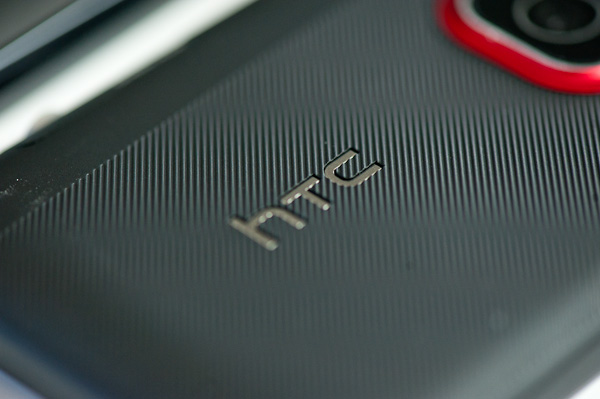
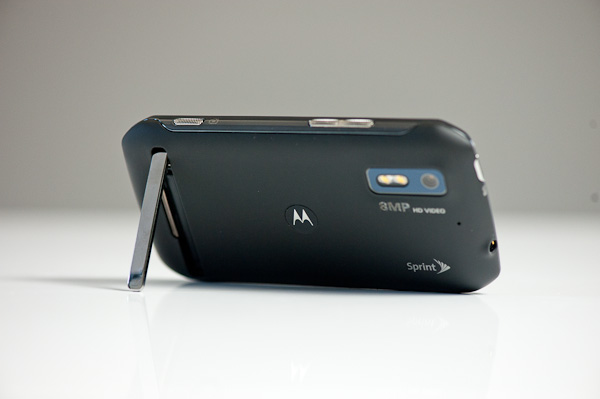
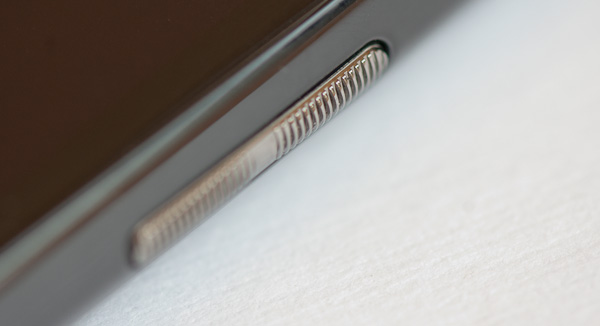
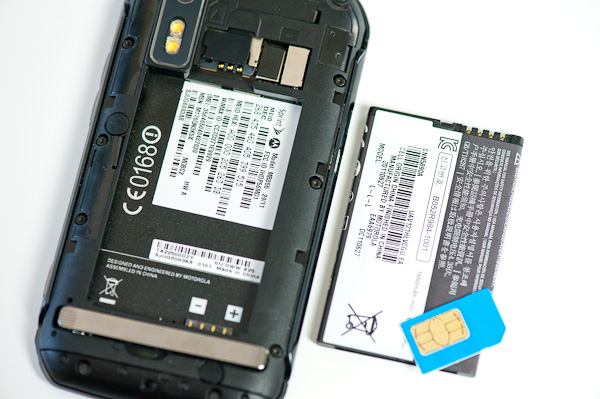
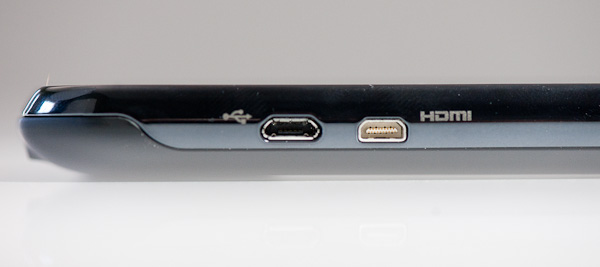








43 Comments
View All Comments
Anand Lal Shimpi - Thursday, August 18, 2011 - link
Sometimes you can't help but channel a little Clarkson :-PReikon - Thursday, August 18, 2011 - link
One reason that Wimax gets better battery life than 3g is that push doesn't seem to be instant on Wimax. From my tests on my EVO 3d, notifications take about 15 min on Wimax while they're basically instant on 3g.bingunginter - Thursday, August 18, 2011 - link
Galaxy S2 Has been out for several months and it is one of the most popular handset right now. Why is there no review for this phone ?A5 - Thursday, August 18, 2011 - link
Not available in the US from any of the carriers and AT doesn't import phones for review.sidarous - Thursday, August 18, 2011 - link
Both phones have been rooted, although it appears from some cursory web-browsing that rooting is slightly easier on the Photon.When my contract is up in a few months, I'll probably go with whichever one has a more active ROM community. That is, unless something bigger and better comes out :-)
Does anyone have thoughts on this? Do HTC or Motorola phones generally have more fun ROMs?
sidarous - Thursday, August 18, 2011 - link
Also, while it isn't a big deal right now, when signing a 2 year contract, it might be better to hold out for a device with NFC support, like the Galaxy S2 (the Sprint variant will either be the "Samsung Epic Touch 4G" or the "Samsung Within").Dug - Thursday, August 18, 2011 - link
Can using a different camera app help with the overblown pictures?SigmundEXactos - Thursday, August 18, 2011 - link
1. The Photon can take 32GB microSD cards (I have one in my phone).2. The Photon has two GLARING issues:
a) Sometimes the phone shuts off until you pull the battery or plug it in then turn it back on.
b) Sometimes inbound and outbound calls have no audio, until you turn the phone off then back on.
REALLY.
There is supposedly an update coming "soon" (there is already a Motorola signed update, but it's not been pushed OTA yet), see: https://supportforums.motorola.com/thread/55069?st...
I've heard the EVO 3D has some voice quality issues and/or reception issues.
They really need to start making PHONES first.
Don't get me wrong, those two issues aside I love my Photon, but I'll probably be swapping out before the 30day period unless the fix comes out.
techkraut - Thursday, August 18, 2011 - link
I disagree with your assertion that "Sprint customers almost always get the short end of the stick" and that there have not been any interesting handsets from Sprint since the Epic 4G. Sprint has had several other firsts since then and like them or not, they were certainly interesting. Among those firsts were the Sprint Kyocera Echo, the first handset to offer a dual android screen device that doubles as a small tablet. The Sprint Replenish offers a Blackberry-like form factor Android device that is one of few "green" devices on the market. I think that over the last 12 months, Sprint has maintained a very competetive and interesting device portfolio. With these two devices, Sprint continues that trend.EarthsDM - Thursday, August 18, 2011 - link
Anand, I was hoping that you would consider the Nexus S 4G. I assumed it would be one of the best phones available for Sprint's network, being a part of the Nexus program. One of my coworkers has the Nexus S non-4G and he loves his. That said, after my painful (and expensive) experience with an Epic 4G I won't consider owning another Samsung phone unless you review it. If I'd trusted your review of the Epic 4G (GPS doesn't work, other problems, not ready for prime time) instead of the Engadget review (great phone and expect regular updates, you can trust Samsung!) I wouldn't have saddled myself with such an awful device.There's nothing quite like being five feet away from an adult tiger, holding up your phone to start a video recording, and have that phone hard crash and being a minute-long reboot process. It got bad enough that I had to shell out for a used EVO 4G :'(